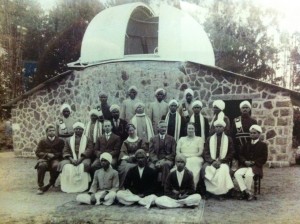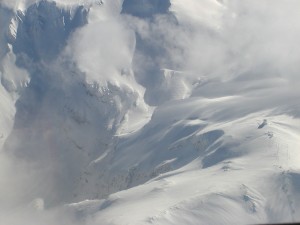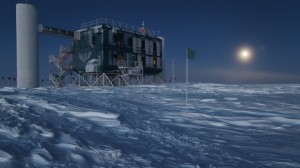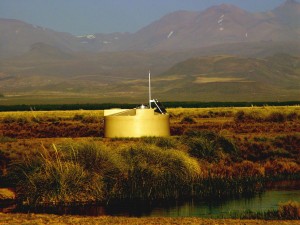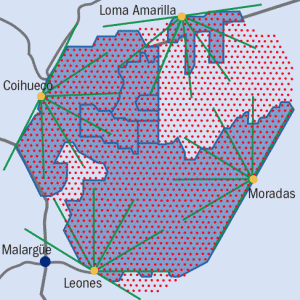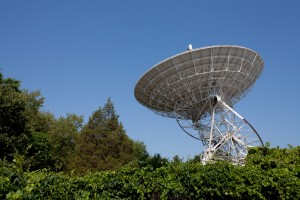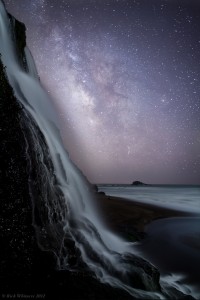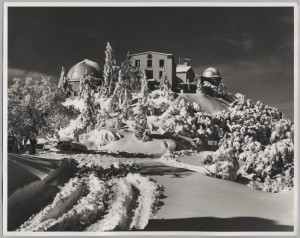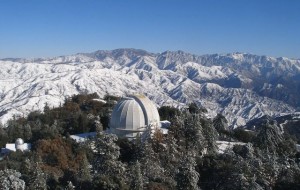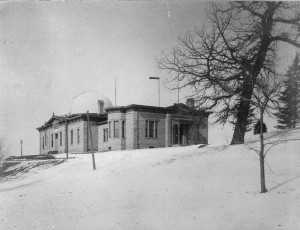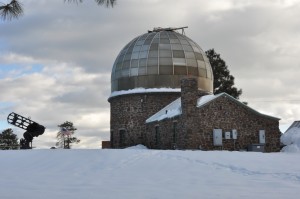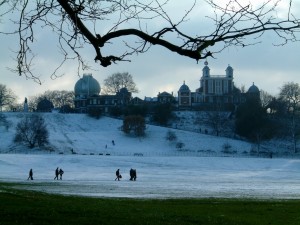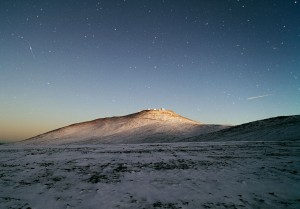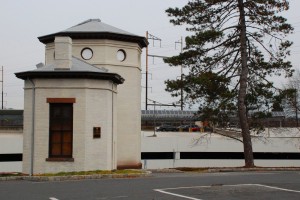
Daniel S. Schanck Observatory, Rutgers, The State University of New Jersey. Photo credit: JR
The Daniel S. Schanck Observatory may be the loneliest building on the Rutgers-New Brunswick campus. Perched at the edge of a parking lot overlooking George Street, the observatory occupies as little space as the university could possibly give to it. Unlike many historical university observatories, Schanck doesn’t have much of a role to play in outreach for the Physics and Astronomy Department: public viewings are conducted at the Robert A. Schommer Astronomical Observatory on the Busch Campus. At one time, the Schanck Observatory looked as if it would be abandoned to the ravages of time and weather, but recently the university commissioned Wu & Associates to restore its exterior. When I arrived on campus last semester (Fall 2012), construction crews were still working on the last details. Today, I noticed some brackets are still unfinished, but the new flashing and downspouts are looking very nice.
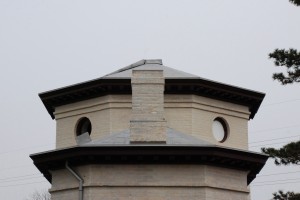
Daniel S. Schanck Observatory. Photo credit: JR
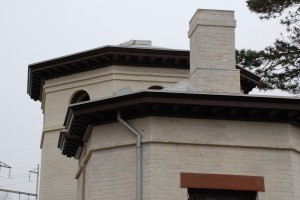
Daniel S. Schanck Observatory. Photo credit: JR
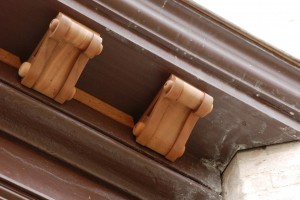
Unfinished brackets, Daniel S. Schanck Observatory. Photo credit: JR
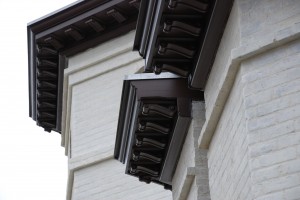
Finished brackets, Daniel S. Schanck Observatory. Photo credit: JR
The observatory is actually two buildings, the passage between them is at the lower level. It was the smaller of the two buildings that captured my attention when I finally noticed the extremely modest observatory. I’m always fascinated by transit instruments (meridian circles and zenith telescopes) and the architectural accommodations that need to be made for them. The design of Washburn Observatory at University of Wisconsin is elegant, with the doors flanked by double-hung windows. Schanck is slightly more utilitarian, but of course, that was the idea, to shelter the instrument in a way that made it easy to use.
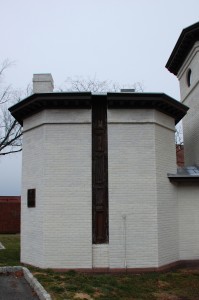
Transit instrument doors, Daniel S. Schanck Observatory. Photo credit: JR
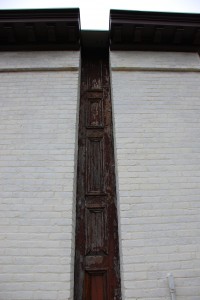
Transit instrument doors, Daniel S. Schanck Observatory. Photo credit: JR
As you can see, the doors are still in bad repair. One of the panels had a pencil notation on it, though, so I’m hoping that work is just paused until winter is over. I admit, I started using my camera’s automatic settings today because my fingers were too cold to manipulate the shutter speed. Most of my bracket photos are blurry because I was shivering too much to hold the camera steady. If I was a member of the restoration crew, I’d be agitating for a break until spring thaw.
I’m just starting to sort through primary documents for this building, but here’s an excerpt from an oral history I found today. Speaking is Professor Paul L. Leath, Physics and Astronomy, during an interview conducted in April 2011 for the Rutgers Oral History Archives:
SH (Interviewer Sandra Stewart Holyoak): Since I’ve been at Rutgers the Physics Department is continually in the news in some fashion.
PL: Yes, it does a lot. Actually, they’re in the news more these days than in the past because we’ve developed a strong astronomy program. Astronomy is something that the public is very interested in, so that you find lots of articles on the astronomy. That’s a very exciting field right, now. This is a golden age of astronomy, with the Hubble space telescope and other major telescopes. There weren’t astronomers here back in those days. We had an astronomer back, long before my time, we had one astronomer, but we didn’t have any astronomers when I came. Well, we had a guy that taught an astronomy course, Maurice Bazin, but we really didn’t have any astronomers. … In fact, I taught the astronomy course once myself, early on. … Do you know the Schanck observatory?
PC: Yes.
SH: Tell us about that.
PL: Well, it’s in dire disrepair now. What happened, more than once, is that people broke into the building and stole parts of the telescope. … Its final demise was somebody came in and actually stole the objective lens out of the telescope, and it wasn’t worth replacing. So, it’s just a shell of a building now. … Well, there’s the frame of the telescope maybe, but we have a new telescope over on the Busch campus, so if you want to see the stars and planets that we used to see, we can do it up on the physics building now. [Editor’s Note: The Robert A. Schommer Astronomical Observatory is located on top of the Serin Physics Laboratory on Busch Campus.]
SH: The Schanck Observatory is at the corner of George and Hamilton.
PL: Right. The other thing that’s happened there, is that they have let trees grow up around it, and the other thing that’s happened is that they put street lights along there, and a parking deck across the street, so the light pollution is impossible there. So, it’s not a good place anymore, but … in its day, in the nineteenth century, it was a very important place. It was a place where they actually, accurately, measured time. There is a little building that’s associated with it that has a little slit of a roof going across, and they would measure the transit of the sun precisely, they’d measure the time there. [Editor’s Note: The Schanck Observatory was built in 1865 to study astronomy at Rutgers. Named after its donor, Daniel S. Schanck, it was patterned after the Tower of the Winds in Athens, Greece.]
